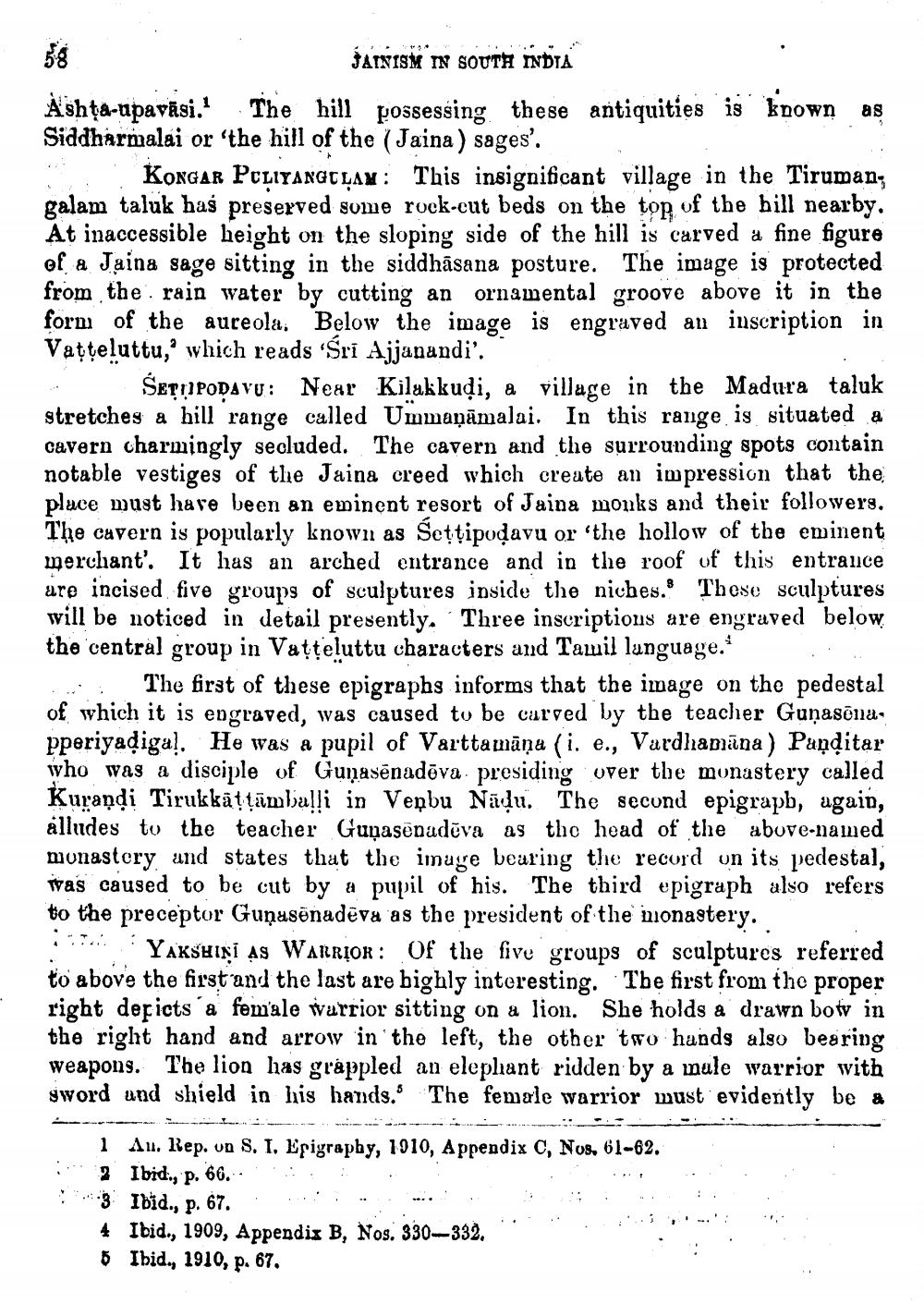________________
ŠAINISM IN SOUTH INDIA Åshța-upavāsi.' The hill possessing these antiquities is known as Siddharmalai or 'the hill of the (Jaina) sages'.
Korgar PCLIYANG LAM: This insignificant village in the Tiruman, galam taluk has preserved some rock-cut beds on the top of the bill nearby. At inaccessible height on the sloping side of the hill is carved a fine figure of a Jaina sage sitting in the siddhāsana posture. The image is protected from the rain water by cutting an ornamental groove above it in the form of the aureola. Below the image is engraved an inscription in Vatteluttu," which reads 'Sri Ajjanandi'.
SETIIPODAVU: Near Kilukkuļi, a village in the Madura taluk stretches a hill range called Ummaņāmalai. In this range is situated a cavern charmingly secluded. The cavern and the surrounding spots contain notable vestiges of the Jaina creed which create an impression that the place must have been an eminent resort of Jaina monks and their followers. The cuvern is popularly known as Settipođavu or 'the hollow of the eminent merchant'. It has an arched entrance and in the roof of this entrance are incised five groups of sculptures inside the niches. These sculptures will be noticed in detail presently. Three inscriptions are engraved below. the central group in Vatteluttu characters and Tamil language."
The first of these epigraphs informs that the image on the pedestal of which it is engraved, was caused to be carved by the teacher Guņasõnas pperiyadiga!. He was a pupil of Varttamāņu (i. e., Vardhapāna) Panditar who was a disciple of Guņasēnadēva presiding over the monastery called Kurandi Tirukkātļāmballi in Veņbu Nādu. The second epigrapb, again, alludes to the teacher Guyasenadēva as the head of the above-named monastery and states that the image bearing the record on its pedestal, was caused to be cut by a pupil of his. The third epigraph also refers to the preceptor Guņusõnadēva as the president of the monastery. .. Yaksugi AS WARRIOR: Of the five groups of sculptures referred to above the first and the last are bighly interesting. Tbe first from the proper right depicts a female warrior sitting on a lion. She holds a drawn botv in the right hand and arrow in the left, the other two hands also bearing weapons. The lion has grappled an elephant ridden by a wale warrior with sword und shield in his hands. The female warrior must evidently be a
i Au. Rep. un S. I. Epigraphy, 1910, Appendix C, Nos, 61–62. 2 . Ibid., p. 66. .
: : . . ... .
.
.. 4 Ibid., 1909, Appendix B. Nos. 330_339
. :'. '.': 5 Ibid., 1910, p. 67.
3
Ibid. p. 67.
.




